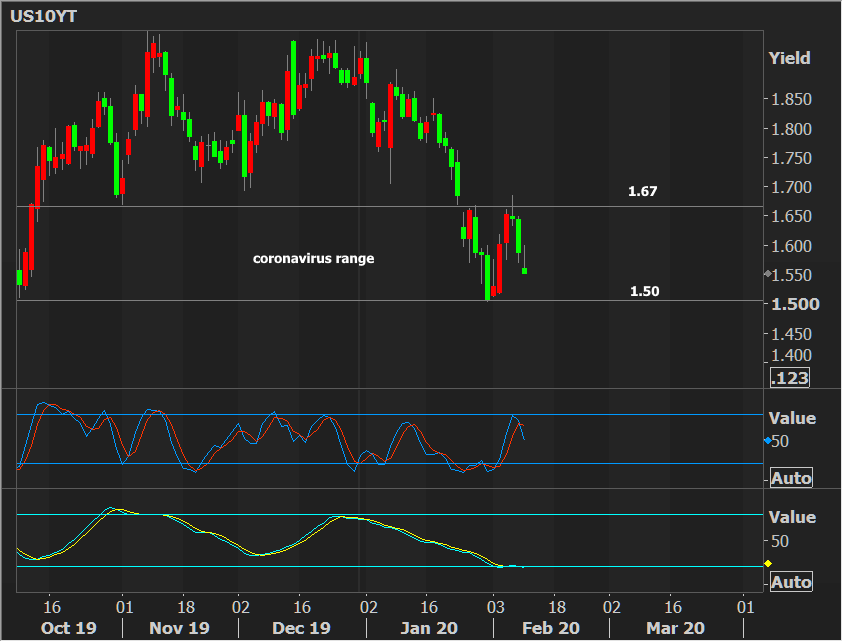If the US/Iran flare up provided an opening act to the unexpected drama of 2020, coronavirus has been the headliner. Before these two events took the stage, there was every possibility that 10yr yields would make good on their threat to break back above 2.0%. After all, 8 of the last 10 days of 2019 saw yields above 1.93%.
The counterpoint is that all of that staging just under 2.0% (without any attempt to break higher) was actually evidence of bond-buying support. Sure, we had a phase 1 trade deal that was expected to clear up some uncertainty among businesses in certain sectors, but not nearly as much as the ultimate deal (not sure which phase that will be?). And the final deal could take months or more (Trump mentioned "after the 2020 election" on more than one occasion).
In the meantime, the bond market was already planning on concerning itself with monitoring global economic momentum and the potential for a cyclical economic shift. All of the above would be occurring against a backdrop where conventional measures showed intractable inflation, and a puzzling disconnection from a strong labor market and low tax rates.
All that to say that we might have had the chance to start 2020 with 10yr yields pushing back against a 2.0% regardless of coronavirus. But with the epidemic concerns, we quickly found ourselves nearly 50bps lower. After a disconcerting head-fake back toward higher yields early last week, we're now settling in to a new, narrow range between 1.50 and 1.67% as we wait for next move. The fact that we're holding near the lower end of that range as a week of Treasury supply begins is reassuring.

In general, there's not much to do on the first few days of this week apart from keeping tabs on coronavirus developments and bonds' technical suggestions. The week's only significant data hits on Friday with Retail Sales. Before that, the Treasury auction cycle may incite some volatility if the auction stats speak to traders' level of comfort in this new, narrow trading range.





